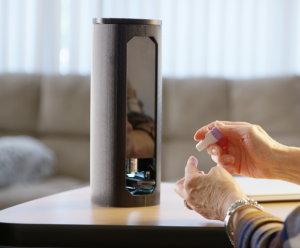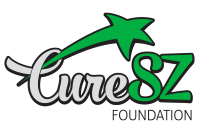
Athelas One
by Pita Navarro, Head of Clinical Operations for Athelas
How did Athelas come into the field of psychiatry?
When we started Athelas, our original goal was to build at-home tools for cancer patients. When our site went live, we were inundated with stories from psychiatric patients. After digging a little deeper and speaking to different patients and key opinion leaders in the industry, it seemed like a great field to deploy our devices in.
The device for monitoring the white blood cell count of patients on clozapine is called the Athelas One. Getting a simple, onsite finger-prick (as opposed to a venous draw in a lab) is easy, and we are able to return a neutrophil count within a couple of minutes.
We see this device in all settings where a patient may benefit: inpatient, outpatient, as well as assisted living homes. Our goal at Athelas is to be at the patient’s point of care, wherever that may be. The technology is now available in all 50 states within the U.S.
There are many ways that our device helps patients with schizophrenia. The most impactful is the amount of time and stress that our device saves them. We’ve essentially eliminated the need for an extra trip to the lab and the invasive venous blood draw.
How does this device help patients?
We see this helping patients with schizophrenia the most in their early transition back into outpatient care and on their way to independent lives. In outpatient settings, getting to the lab, waiting in line, tracking down your results and making sure they get communicated to your pharmacy is extremely difficult. Administrative challenges of clozapine management decidedly seem to be one of the biggest causes of patients falling off their treatment. By automating this system and making the weekly monitoring less invasive and more accessible, this device ensures a more successful treatment path for patients.
What has the feedback been from doctors, patients, nurses?
The feedback we’ve received from all parties has been positive. Doctors and nurses are able to offer better care to their patients and eliminate some of the clerical errors that occur within the current system. This device allows them to reach new patients they wouldn’t have been able to help previously. Patients are glad to not have to be the middleman between all of the facilities, and they are happy to see how easy and painless the procedure is.
We’ve had doctors let us know they are now able to prescribe clozapine to a larger population of their treatment resistant patients. Doctors highlight the fact that access to this device opens the door to treatment for so many patients who have been struggling for months, even years, who previously felt they had no options left. Nurses are relieved to no longer have to try to track down patient results from labs and coordinate results with the pharmacy. Most importantly, patients we’ve spoken to find our device and fingerstick method to be hassle free.
We’ve witnessed multiple patients getting their finger pricked for the first time and their reaction after the finger prick typically is ‘that’s it?’. They’re surprised and relieved at how painless blood monitoring will be for them going forward.

